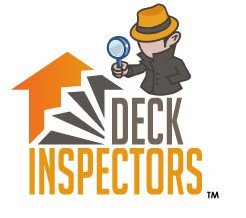How to inspect a deck for safety: A step-by-step guide on inspecting your deck for common safety hazards

Regular deck inspections ensure structural integrity and safety, especially in compliance with regulations such as SB 326 in California. Whether you’re a homeowner or a property manager, conducting routine inspections can help identify hazards before they become costly or dangerous. Below is a step-by-step guide to inspecting your deck for common safety issues. SB 326 Step 1: Examine the Deck’s Structural Components The first step in a thorough deck inspection is to check the main structural components, including posts, beams, and joists. Look for any signs of wood rot, cracking, or warping, as these can compromise the deck’s stability. Pay close attention to the ledger board, which connects the deck to the building; it can be a significant safety risk if it is not adequately secured or shows signs of deterioration. By SB 326, multi-unit residential properties must undergo professional deck inspections to ensure these structural components remain secure and safe. Step 2: Inspect Fasteners, Railings, and Connections Fasteners such as screws, nails, and bolts play a crucial role in holding a deck together. Over time, they can loosen, corrode, or weaken, which may lead to structural instability. Inspect all fasteners for rust or missing components and tighten or replace them as necessary. Railings and balusters should be firmly attached and movement-free, as loose railings can pose serious fall hazards. Under SB 326, decks in multifamily residences must meet strict safety standards, including secure railings and properly maintained fasteners. Step 3: Assess the Deck’s Surface and Support System The decking boards should be free of excessive wear, splintering, or sagging. Look for water damage, mold, or mildew, indicating drainage issues accelerating deck deterioration. The support posts should be stable, with no signs of shifting or sinking. Checking the footings for erosion or soil displacement is also crucial, especially in regions prone to seismic activity or heavy rainfall. Step 4: Evaluate Drainage and Waterproofing Proper drainage is key to prolonging a deck’s lifespan. Ensure that water does not pool on the deck surface and that gutters or downspouts direct water away from structural components. A high-quality sealant can help protect against moisture damage, an essential step for decks exposed to harsh weather conditions. SB 326 Conclusion Regular deck inspections proactively ensure safety and longevity while complying with regulations like SB 326. By systematically examining structural components, fasteners, railings, and drainage systems, homeowners and property managers can identify and address potential hazards before they become serious issues. Professional inspections are not just recommended for multi-unit residences but are required. By staying ahead of maintenance and safety concerns, you can protect your investment and the well-being of those using your deck. Click here to get in contact with an expert from Deck Inspectors today! Deck Inspectors for Southern California is happy to offer our services in Los Angeles County, Riverside County, Orange County as well as San Diego County and all Southern California surrounding areas like: Los Angeles, Irvine, Long Beach, La Jolla, Glendale, Pasadena, Santa Ana, Huntington Beach, Dana Point, Burbank, Santa Monica, Anaheim, Temecula, Encinitas, Chula Vista, Vista, Mesa, San Diego, Oceanside, Escondido, Carlsbad, Poway, Mission Viejo, and El Cajon.
